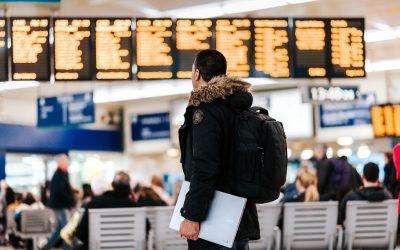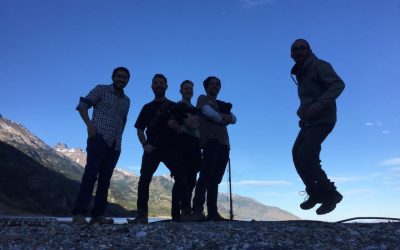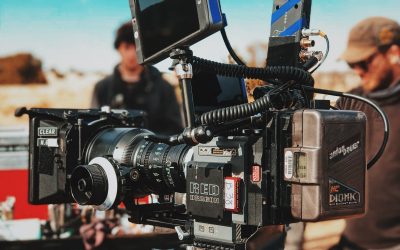Below we’ve attempted to give an overview of requirements around filming permits for Chile, and a breakdown of the most sought-after types. There are several types of permits for various activities and location-types, and we’ve tried to provide as much info here as possible for each. If you are planning a shoot and need any advice, or unsure about what permits you need, don’t hesitate to ask us for help.
_________________
Chile is a long, narrow country stretching down South America’s western edge, with more than 6,000 km of Pacific Ocean coastline. Its shape is unique in that it’s one of the longest countries in the world, but it’s also one of the narrowest, with an average width of only 180 km. Packed inside this slim landmass stretching north-to-south is an exquisite variety of locations and landscapes for filming and photography, including deserts, mountains, beaches, islands and forests, all the way down to Antarctica.
Despite the appeal of some stunningly remote locations for filming, it’s often necessary to obtain filming permits to shoot in Chile’s public spaces, no matter how remote. While small documentary crews rarely have issues filming, there can be strict rules, especially around national parks, reserves, government buildings, small communities and areas of outstanding beauty, so it’s always advisable to obtain the correct permits in order to avoid any delays to your production. Larger crews doing street closures or disrupting traffic or pedestrians will almost always need some type of permit.
Different types of permits are required for different kinds of locations or filming equipment, and most take around three-to-four weeks to obtain, with some taking slightly longer if they’re complicated. At Pudu we recommend allowing enough time to apply in advance of your crew arrival, and using a local production company like Pudu to help things run smoothly. Our experience and contacts inside the relevant departments can save you some headaches and help your shoot run like clockwork, as we’ll help you manage the lead-in time required for each type of permit in addition to having an experienced producer make the application on your behalf, whether it’s for a municipality, a shoot in a beautiful national park or just a simple street level shoot in Santiago or a provincial city. In some cases we may be able to help you expedite the permit process if timing is tight.
It’s worth noting that government-issued press passes – which Pudu can help you obtain prior to your shoot and which you can read about here – offer some form of flexibility in shooting in public places, and sometimes omit the need to have a permit, as long as the crew and equipment have a relatively small footprint. However, in sensitive locations, such as close to government or military buildings, the rules are often stricter and we fully recommend having permits in place prior to rolling cameras. National Parks have their own application process managed by the National Forestry Corporation (CONAF) who authorize productions via their regional offices. Other kinds of parks, like national reserves or local parks managed by municipalities in towns and cities usually have their own process too.
Most types of permits carry a fee charged by the authority or institution issuing them, and these vary depending on the specifics of the material being filmed or photographed, and whether your shoot is for commercial or other purposes.
Below we will review different types of permits and their processes to help you and your team understand each scenario.
Municipalities
Chile is divided into 345 municipalities and all have slightly varying processes for applying for film permits, which Pudu can help you with. Here’s an outline of the process:
-
Application turnaround time: We should aim for a minimum 20 working days but with some municipalities this can be expedited
-
Application process summary: We will need to apply with specific information about your filming activity, including the location, time and date, crew and equipment setup, and an overview of the purpose of the photographic or audiovisual production.
The municipalities are branches of local government whose purpose is to look after the interests of the local community and ensure its participation in economic, social and cultural progress.
If you need to film inside a public space, Pudu’s bilingual producers can help you to ID the relevant municipality and communicate with them on your behalf (most don’t speak Spanish), and begin the application process for you.
Most municipalities will issue an application form that requests specific information about the shoot.
Pudu will complete the application process, using relevant information provided by you. Some municipalities require specific details, including dates and times, the schedule for filming, IDs of crew members, and the specifics of the location, in some cases having to provide references to addresses, cross-streets or nearby road junctions (in the case of street filming). Sometimes a simple diagram of the crew and equipment layout is needed.
It should be noted that the process for municipal filming permits can take at least 30 calendar days, so it’s ideal to start the conversation with the municipality at least one month before shooting.
There are other specific procedures for filming inside churches, which go through the municipality but need to be supported by authorization from the regional Archbishop, obtained separately, and this is something Pudu’s producers can also assist with.

Government Buildings, Military Buildings, and Embassies
-
Application turnaround time: We should aim for a minimum 25 working days in order to contact the relevant departments and the municipality where the building is situated.
-
Application process summary: We will need to apply with specific information about your filming activity, including the location, time and date, crew and equipment setup, and an overview of the purpose of the film being shot.
Many international film crews we work with need to film at least GVs close to La Moneda — Chile’s presidential palace in downtown Santiago. Permits for normal street-level GVs and even for interviews with La Moneda as a backdrop can be obtained via the local municipality, and with your permission Pudu can alert the local police commissary to avoid any delays when we are on the ground with cameras. It is vital to obtain permits if using a drone close to La Moneda, and several other nearby government buildings, along with a special authorisation from the presidential palace and Chile’s civil aviation authority (the DGAC). The authorities use radio jammers to disable unauthorised UAV flights close to sensitive buildings in this area, but permits will remove any risk.
If filming near a military or police building, Pudu can help you obtain permission from these bodies, as well as helping with the authorisation from the local municipality for filming GV exteriors from the street.
Embassies are particularly tricky as filming locations but street-level filming is possible with enough lead-in time before filming. Applications for flying drones close to embassies are almost always rejected.
National Parks, Reserves and Natural Monuments.
-
Application process summary natural reserves and parks: For filming inside Chile’s amazing national parks, Pudu will apply to CONAF (National Forestry Corporation) for a permit on your behalf. As part of the application, CONAF will ask us to provide information including details of the crew and equipment (sometimes including a diagram of the setup and crew footprint) along with exact dates and times. NB – we can apply for a filming ‘window’ of a few hours if it’s hard to know the exact times the crew will arrive at the location, which is often the case with unscripted shoots.
-
Application turnaround time: A minimum of 30 days.
Chile’s natural areas are protected by the State’s National System of Protected Wild Areas (SNASPE) – a conservation scheme managed by the National Forestry Corporation (CONAF). The Chilean State says that for more than a century, it has maintained a vision of conservation in its territory, which has allowed it to protect a significant amount of the country’s natural ecosystems.
The SNASPE scheme is composed of 100 protected areas, broken into units of National Parks, National Reserves and Natural Monuments. The purpose of these units is to conserve natural resources and their cultural values for the future. Fortunately, it is possible to conduct public activities such as photography and filming inside the protected areas covered by SNASPE, including even for feature films and commercial advertising, as long as a permit is obtained and the rules are adhered to.
When applying to film inside national parks, reserves or close to national monuments, such as the Moai statues of Easter Island / Rapa Nui, CONAF may establish specific conditions or limitations around your production activity, but these are usually only around the protection of flora and fauna.
To begin the application process, Pudu will contact the relevant regional CONAF office and, working with you by phone and email, complete the online filming permit application form. All filming and photography activities have a daily fee for the actual shoot days based on fixed tariffs established by CONAF, according to the scope of each production.
Drone use inside national parks usually carries an additional fee from CONAF and also require joint authorisation from Chile’s civil aviation authority (called the DGAC). These authorisations are absolutely possible to get, but usually take longer than 30 days, so we recommend beginning the process at least 6 weeks in advance of filming.

General Drone Filming | Photography in Chile
-
Application process summary to fly a drone in production: We strongly recommend contracting one of Pudu’s experienced local drone pilots for any drone shoot in Chile, since the pilot will be normally required to hold a Chilean UAV pilot’s license with local insurance.
-
NB – it is possible to have your foreign crew member operate a drone during the production in Chile, but this will first require your foreign drone operator to attend the chilean civil aviation authority (DGAC) offices in Santiago, in person, prior to filming. In some cases the pilot will need to attend with their fully-assembled drone, in order to obtain an Air Operator Certificate. This can be problematic with production schedules and crew having enough lead-in time between arriving in Chile and the first day of shooting, so if possible, we recommend contracting one of Pudu’s experienced drone pilots who carry their own kit and have their documents in place. Contact us and we’ll be happy to talk you through the high-end global productions our pilots have already worked on, including for major streaming services, international TV networks, and top brands.
-
-
Application turnaround time for general drone filming with a Chilean drone operator: This can be a slow process, so we strongly recommend starting the application a minimum of six weeks in advance of the shoot.
As with many counties around the world, filming with a drone has become increasingly complicated in Chile, mainly due to requiring authorisation from the civil aviation authority (DGAC), a pilot with a local license, and the need to have locally-accepted public liability insurance in place.
Filming in private spaces in Chile usually won’t require a permit as long as you have the permission of the owner, but special care is sometimes needed if drones are involved.
Recreational or private flights do not require authorization from the DGAC, as long as:
-
The drone is manufactured with expanded polyethylene.
-
The droneeight does not exceed 750 grams.
-
The flight will only be carried out inside the private space with the authorization of the owner.
-
The drone is not operated at a height of more than 50 meters.
-
The drone operator ag respond to any damage caused to third parties.
You can also check this link for more information on regulations set by the DGAC here, or contact us if you need help determine what authorisation is required.

For further information on anything related to filming and photography permits in Chile, don’t hesitate to contact us and speak to a Pudu producer.



